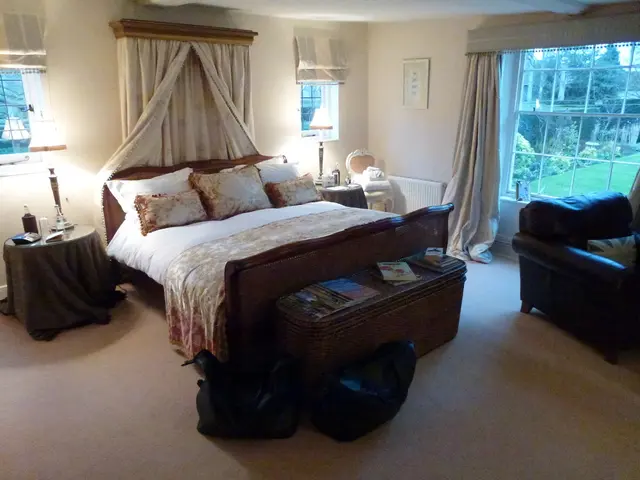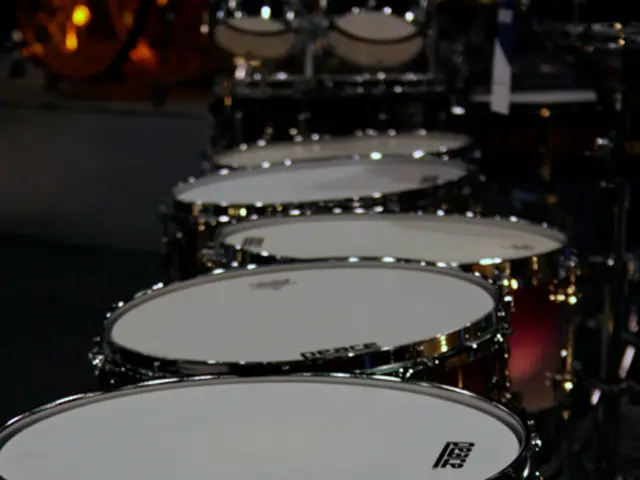Clockmaker's Dispute: Balancing Preservation, Conservation, and Restoration
In the world of antique clock repair, restoration, and conservation, a new approach is gaining traction - minimally invasive intervention. This technique, similar to its counterpart in surgery, aims to preserve as much of the original material and structure as possible while causing the least amount of disturbance or alteration.
The principles guiding this approach are straightforward. First and foremost is the preservation of original materials. This means retaining as much of the clock’s original mechanisms, components, and finishes without replacement or unnecessary alteration.
Second, minimally invasive intervention prioritizes reversibility. Treatments and repairs should be such that they can be undone in the future without damage to the original parts, ensuring the clock’s long-term conservation.
Third, minimal physical impact is key. Avoiding or minimizing invasive procedures such as excessive dismantling, machining, or material removal helps maintain the structural and aesthetic integrity of the clock.
Fourth, documentation is crucial. Every intervention should be carefully recorded to maintain a clear preservation history.
Lastly, respect for historical authenticity is paramount. Repair materials and techniques should be compatible with and sympathetic to the original manufacturing methods and materials.
This approach seeks to balance the clock’s mechanical functionality and aesthetic preservation while maintaining its historical and collectible value.
While detailed standards for minimally invasive intervention in antique clock repair may not be widely covered in literature, they are typically defined by conservation charters or professional organisations in horology and conservation.
When it comes to repairing a clock, the goal is to create a functional clock that presents well. Cleaning a clock case is generally recommended, even if the owner does not wish for other repairs.
Repair, restoration, and conservation are three distinct methods used in maintaining antique clocks. Repair alters the clock from its original form, restoration reconstructs it to original condition, and conservation protects it as close to its original condition as possible.
Opinions on trivial repairs can provoke heated arguments among clockmakers. For instance, the question of whether to undo a previous poor repair on a clock is a topic of debate. Similarly, the dilemma of identity in antique clocks includes questions about whether a significantly restored clock is still the same clock and whether changes or alterations make it more "original".
One such debate can be seen in the case of the Bluenose II, a symbol of Nova Scotia. Although rebuilt in 2018 with new materials, some items were reused. The identity of the Bluenose II is a topic of debate among purists and Nova Scotians. Its timeline for future repair includes replacing the masts, sails, rigging, and deck structures.
Specialists like D. and J. Benson, specialists in early English clocks, believe in retaining changes made to clocks as part of their history. Almost all lantern clocks, a type of clock widely used in English private homes in the 17th century and highly collectible today, have been altered, even those considered "genuine".
When working on a customer's clock, it is best to present several options for repair and address case issues. If a repair was done shortly after a clock was made and it was a proper repair, it should be left untouched if it is clearly documented and functions well.
In conclusion, minimally invasive intervention in antique clock repair, restoration, and conservation is a thoughtful and considerate approach that seeks to preserve the historical and aesthetic value of these timepieces while ensuring their mechanical functionality. It is an approach that is gaining traction among collectors and professionals alike, and one that promises to help us appreciate and conserve these beautiful and intricate pieces of history for generations to come.
[1] Minimally Invasive Techniques in Surgery: http://www.ncbi.nlm.nih.gov/pmc/articles/PMC2875713/ [3] Minimally Invasive Heart Valve Surgery: https://www.heart.org/en/health-topics/heart-procedure/minimally-invasive-heart-surgery/minimally-invasive-heart-valve-surgery
- The principles of minimally invasive intervention in antique clock restoration also echo those in minimal-invasive surgery, prioritizing preservation of original materials, reversibility, minimal physical impact, thorough documentation, and respect for historical authenticity.
- Incorporating elements of health-and-wellness and fitness-and-exercise, one could argue that the process of antique clock conservation can serve as a metaphor for maintaining the well-preserved state of vintage clocks - as an ongoing pursuit of balance between restoration and preservation, function and aesthetics.
- The antique clock repair community has become increasingly connected to other fields in their pursuit of best practices, drawing inspiration from the advancements in minimally invasive surgery and the values of horology, science, and even health-and-wellness to ensure the longevity of antique clocks as well as their historical and collectible value.






